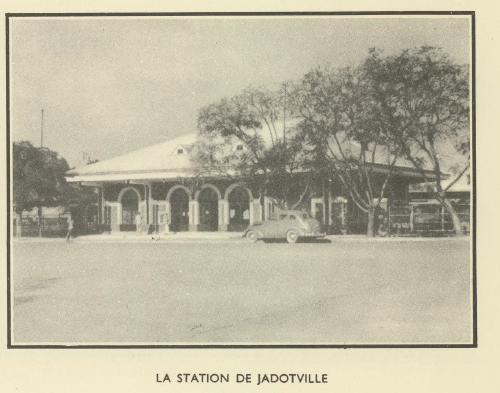Reconstruction of the Likasi Railway Station: A Catalyst for Regional Development in the DRC
- Joel Mukalay

- Jan 20
- 3 min read
Updated: Jan 28
Abstract
The Democratic Republic of Congo (DRC), often referred to as a "veritable geological scandal" due to its immense mineral reserves, faces significant challenges in harnessing its resources for sustainable development. This paper explores the critical role of railway infrastructure, focusing on the reconstruction of the Likasi Railway Station, as a transformative project to address the socio-economic and environmental challenges of the region.

1. Introduction
The DRC, with its vast land area of 2,345,000 km², boasts one of the world’s richest subsoils, valued at over $24 trillion. Despite this wealth, the lack of adequate infrastructure has constrained the country’s economic potential. The South-Eastern region, particularly Katanga, holds the heart of this treasure. This study examines the redevelopment of the Likasi Railway Station, a strategic project aimed at revitalizing the city of Likasi and the region’s rail network.
2. Historical Background
Likasi was founded in 1917 following the discovery of its eponymous mine. The railway was central to the city’s growth, facilitating the transport of minerals and goods. By the 1960s, the station served a population of 78,000. Today, Likasi’s population has surged to over 650,000, rendering the existing station inadequate for contemporary needs.
Henry Morton Stanley’s declaration, “Without the railway, the Congo is not worth a penny,” underscores the criticality of railway infrastructure for economic development. The Likasi station, initially built to serve the transport needs of the 20th century, now faces an urgent need for modernization.
3. Objectives of the Reconstruction Project
The Likasi Railway Station reconstruction aims to:
Modernize infrastructure to accommodate 700 passengers per hour.
Facilitate efficient transport of agricultural and mineral goods.
Improve accessibility to isolated localities and cities in the Katanga region.
Enhance economic activities, including agriculture, mining, and fisheries.

4. Architectural and Functional Design
4.1 Exterior Layout
The station features two main squares:
Eastern Station Square: Integrated with the city’s bus station and administrative center, separating pedestrian and vehicular traffic.
Western Station Square: A larger area to manage higher passenger flow.
Landscaping elements include shaded awnings, fountains for microclimate regulation, and separate zones for public transport and private vehicles.
4.2 Building Design
The station’s symmetrical layout ensures functional efficiency and aesthetic balance. Key features include:
Curtain walls for sun protection, particularly on the western facade.
Solar panels on the roof and atrium for energy efficiency.
Local materials and cold gamma colors for sustainable construction.
The interior planning emphasizes intuitive navigation, allowing passengers to access ticketing, baggage, and waiting areas effortlessly.
5. Socio-Economic and Environmental Impact
The project’s benefits extend beyond Likasi:
Economic Revitalization: Enhanced transport capacity will boost agricultural and mineral exports, reduce goods prices, and foster industrialization.
Employment Creation: Construction and operational phases will generate significant employment opportunities.
Environmental Sustainability: Railways provide a low-carbon alternative to road transport, reducing CO2 emissions.
Social Inclusion: Affordable rail transport will improve mobility and integrate remote communities into the regional economy.
6. Challenges and Recommendations
The success of the project depends on:
Comprehensive restoration of existing railway lines.
Government policies supporting infrastructure maintenance and development.
Community engagement to ensure local needs are met.
7. Conclusion
The Likasi Railway Station reconstruction marks a pivotal step towards economic recovery and regional integration in the DRC. By addressing infrastructure gaps and embracing sustainable architecture, the project has the potential to transform the socio-economic landscape of the Katanga region and beyond.
References
Clive Lamming, (2020). L’Afrique: le continent n’a pas à dire « merci » pour son chemin de fer. Paris: Simon Bolivar.
Leah Palnik, (2018). 6 Surprising Advantages of Rail Transport Over Road Transport. Oberlin, OH: PartnerShip.
J. Peter Pham, (2014). In Congo, third time’s no charm. Washington, D.C.: The Hill.
Charles Blanchart, (1999). Le Rail au Congo belge, tome 2: 1920 - 1945. Belgium: G. Blanchart & Cie.
The World Bank Group, (2020). Modern Railway Services in Africa: Building Traffic – Building Value. Washington, D.C.: The World Bank.
Wayback Machine, (2013). Sustainable Architecture and Simulation Modelling. Dublin: Dublin Institute of Technology.



















Comments